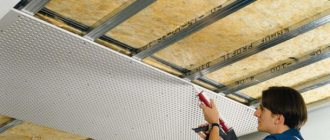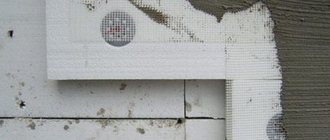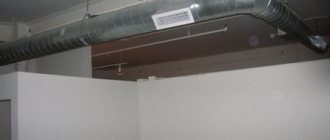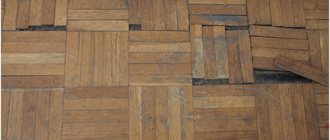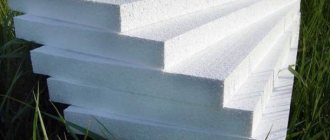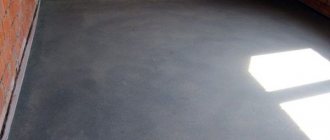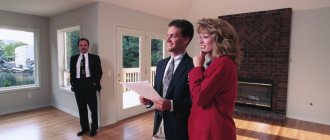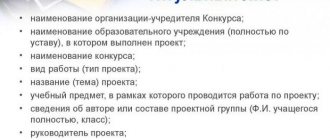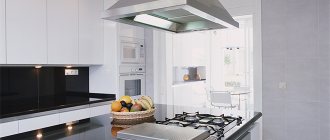Noise from neighbors and from the street often becomes an important problem - it can spoil your mood, or even worsen your well-being. According to polls, it interferes with up to 65% of Russians. It is not easy to protect yourself from it - for sound insulation to be reliable, you need to be well prepared, know what types of noise there are, and what is more effective to do against each of them.
Next we will talk about protection from impact noise on the walls - this is a very common irritant in apartments where there are neighbors on all sides, and not all of them are usually quiet. It will be discussed: what sound insulation is, types of noise, features of sound insulation of walls and preferred materials, as well as the actual stages of work.
What is sound insulation and why is it needed?
Noise pollution is an even more serious problem than it might seem at first glance. Irritation due to noise coming from the street or from behind a wall is just the tip of the iceberg. It occurs with a background noise of approximately 35 dB, corresponding to muffled speech. Already this level, being constant, can affect the concentration and overall tone of the body. A level of 42 dB leads to insomnia, and a level of 50 dB leads to heart and vascular diseases. For those who already suffer from them, it is even more necessary to live in conditions of good sound insulation, since their condition may worsen. Noise pollution seriously shortens life - it takes 3-5 years, and sometimes even more.
Soundproofing helps get rid of it. Thanks to it, you will not hear your neighbors, as well as sounds from the street or from the entrance. It is ensured by the use of effective materials and their installation taking into account the propagation of sound. Even small errors during installation are enough to ruin everything, so this is a very responsible process.
However, sound insulation is not the same as complete suppression of all external noise. Its task is to reduce their level so much that they become inaudible to human hearing. Then they will not cause any harm to health. There is no need to ensure complete silence; moreover, it even creates a feeling of discomfort due to the fact that it is common for a person to feel weak background noise.
Floor soundproofing panel systems ZIPS
Another option for floor soundproofing is the frameless ZIPS-floor system. These are sandwich panels that are laid on a pre-leveled floor. The disadvantage of this solution is the need to level the floor surface before installing the panels (presence of wet work) and poor sound insulation of the low-frequency component of penetrating noise. When installing ZIPS Floor, the floor level will rise by approximately 7-8 cm.
A detailed description of the diagram and details of installation with photographs on the FLOOR SOUND INSULATION page: ZIPS FLOOR VECTOR.
Types of noise and features of soundproofing walls
There are three main types of noise that can disturb a home - when thinking about sound insulation, each of them must be taken into account separately. This:
- Airborne noise penetrates both through walls and through the floor and ceiling. If you can clearly hear a child crying in the next apartment, or the piano being played from above, this is exactly it, airborne noise. The thicker the material, the less it will be. If the partitions in the house are thin, then you will have to work hard with it.
- Impact noise can also penetrate through the floor, ceiling, and walls. Mainly it is someone's stomping, the clearly audible sound of moving furniture, and the like. But airborne noise can also become shocking: loud sounds turn into vibration and are transmitted along the walls. If you are bothered by music from your neighbors, then the noise entering your apartment is a combination of airborne and percussive. If you get rid of at least the second one, the situation will become much better.
- Constructive noise is similar to impact noise, but still has slightly different properties. These are sounds that are well transmitted over solid partitions, even over long distances. For example, the sounds of renovation on the first floor can be heard even on the sixth.
Thick walls do a good job of protecting against noise, but if they are thin, then all that remains is to resort to the use of special materials for sound insulation. It should be taken into account that noise penetrates through many openings, such as sockets, heating risers, joints in walls and the like - all of them will also need to be addressed to achieve a good result. At the same time, there is no need to soundproof the entire apartment: usually it is only needed for rooms used for work or leisure, that is, an office, a nursery, a bedroom.
Types of floor sound insulation
Sound insulation under screed
Today, most new buildings are rented without screed, so all actions to soundproof the floor fall entirely on the shoulders of the homeowner. Floating floor technology, i.e. Screeding over a layer of soundproofing materials is a standard solution for both new buildings and secondary housing.
Rolls of hydro-sound insulation
Soundproofing mats and boards
Granular mixture
Soundproofing a floor without screed
The installation of a floating floor involves wet work; this scheme is carried out mainly during the renovation of an apartment. Soundproofing technologies with joists or prefabricated flooring allow you to soundproof the floor without screed, so they are ideal for apartments with ready-made renovations.
Dry screed
Floor on joists
Sandwich ZIPS Paul
Proper soundproofing of the floor will completely eliminate noise from below, which is especially important for new buildings, where renovations by neighbors can take several years!
Soundproofing materials
There are materials that reflect and absorb sounds. For reflective materials, the sound insulation index Rw is used - it shows how many decibels the material is capable of reflecting. The main role in this is played by its mass and density. The effect will be much better if the sound-reflecting material is supplemented with sound-absorbing material; its main property is looseness, it should have many pores.
Sound-absorbing materials are divided according to their rigidity into several categories:
- Soft, such as cotton wool or felt. Their structure is fibrous, they have a high absorption coefficient (on average 0.8-0.9), while having a low specific gravity. The disadvantage is that the thickness of the soundproofing layer of such material must be large - from 10 cm.
- Semi-rigid - foamed polymers, mineral wool. They are inferior to soft ones in terms of absorption coefficient (usually 0.6-0.7), while they have a greater specific gravity, but take up less space.
- Solid - cotton wool in granules, pumice or vermiculite. The absorption coefficient is even lower, but they also take up even less space. And the space factor is very important, since it can take a lot of space to ensure good sound insulation.
Among the main materials effective for sound insulation from impact noise on walls, it is worth highlighting:
- Drywall is an important feature in that a slab of it is attached not to the wall, but to the ceiling or floor near it, otherwise it will not protect against sound, but will become its conductor. Rubber gaskets are also often used. The gaps between the plates are sealed using polyurethane foam.
- Mineral wool - often used in combination with drywall. It is placed between him and the wall. ZIPS panels use mineral wool, lined with plasterboard on both sides. It also provides thermal insulation.
- Fiberglass canvas with fine fibers is well suited for processing joints of building structures.
- Decorative wood panels simultaneously perform two tasks: in addition to sound insulation, they allow you to do without wall decoration. Their disadvantage is their high cost.
- Polyurethane provides excellent protection (it is even used for recording studios) with a small thickness - 15 mm is enough. It weighs little, is elastic, and is easy to process and install. But fuel is also expensive.
- A soundproofing membrane is usually used as an addition to other materials. Thanks to its flexibility, it is easy to install, but the price is also quite high.
In addition to those listed, there are other materials that effectively cope with the task of soundproofing a room. But they do not include some of those that are sometimes tried to be used for this, for example, polystyrene foam and expanded polystyrene - they have too low a sound absorption index. Wallpaper and fabrics also play virtually no role.
The floor is on joists.
Also, soundproofing of the floor is carried out by the floor on the joists. This is a very effective option for sound insulation. A properly executed design will protect against both impact and airborne noise. This design is perfect in cases where wet work is impossible or you do not have time to wait for the screed to dry. This option is also suitable for old housing stock, where the ceiling is not designed to support the additional weight of the screed.
Thickness 8–10 cm. The floor is assembled on joists quite simply and quickly. Installation example: SOUND INSULATION OF FLOOR ON JOINTS IN AN APARTMENT.
Airborne noise from the street
Thermal and sound insulation of the walls usually prevents airborne noise from entering the premises. Depending on the design of the house, this can be an insulated frame, layered masonry with stone wool between rows of bricks, a plaster or ventilated facade system. Installation of these systems occurs during the construction phase. If this was not done in a timely manner and the noise-proof properties of the external walls suffer because of this, additional insulation is carried out in a private house. In this case, an additional layer of stone wool should be installed only on the outside of the building, so that the dew point does not move inside the existing thermal insulation layer. It is impossible to carry out such work on their own in an apartment building, so residents can only complain to the management company.
Internal partitions from scratch
System TN-WALL Acoustic
Good sound protection between rooms, for example, so that noise from the nursery does not enter the office, will be provided by multi-layer soundproof partitions with stone wool. During the construction phase of a house, you can install the TN-WALL Acoustic system. It is a steel frame filled with TECHNOACUSTIC mineral wool. From the outside, on both sides, the partition is sheathed with gypsum plasterboard and gypsum plasterboard sheets. In this design, the fibrous material will dampen the sound wave, and the dense cladding will prevent its penetration into the room. By combining several layers of cladding and changing the thickness of stone wool, you can achieve the required level of sound insulation. Typically, in a private house, the requirements for it are higher - country residents are spoiled by silence and react more sharply to extraneous sounds, so it is better for them to provide for a greater thickness of insulation and the amount of cladding in advance.
Stages of construction of a partition using the TN-WALL Acoustic system
Why can I hear my neighbors?
The mechanism of sound penetration through a homogeneous barrier (wall or ceiling): under the influence of incident sound on the barrier, the latter begins to vibrate like a membrane. The transfer of sound energy through a barrier is essentially due to the fact that it emits sound into the room it protects.
The amplitude of the vibrations is extremely small, but due to the huge surface area, the acoustic power emitted by the wall into the room is significant. That's why we hear our neighbors.
The power emitted by the obstacle depends on the amplitude of the oscillatory velocity. The larger the mass and the higher the vibration frequency, the smaller it is. Therefore, the sound insulation of any fence increases with mass and frequency.
Dry screed (KNAUF-superfloor)
If you need basic floor sound insulation only from impact noise, then you can opt for fairly simple thin structures (without screed or joist system). Schumanet sound insulation or analogues are laid on the floor and the rolls are covered with gypsum fiber sheets or ready-made KNAUF-Superfloor elements. This design is quickly assembled and will not raise the floor level much. Thickness 2-3 cm.
GVL sheets can be replaced with special soundproofing panels with sand, 12 mm thick. An example of installing such sound insulation: DRY SCREED WITH SOUND INSULATION IN AN APARTMENT.
SOUND ABSORPTION
As we remember from the physics course, sound waves coming from a sound source, some pass through the surface, and some are reflected from various surfaces. As a result, the reflected sound is superimposed on the direct sound, resulting in an echo or reverberation. And so that there is no echo and in order to achieve sound purity, sound absorption is needed.
Sound absorption is the finishing of a room with sound-absorbing materials to absorb sound waves.
The main measurement of sound absorption is the sound absorption coefficient of surfaces. The sound absorption coefficient shows the proportion of sound energy that remains in the sound-absorbing material in relation to the total energy of the sound wave. Sound-absorbing materials have a coefficient close to 1.
Sound absorption is very important for recording studios when the sound source is in the same room.
We've dealt with sound absorption, let's now deal with sound insulation.
